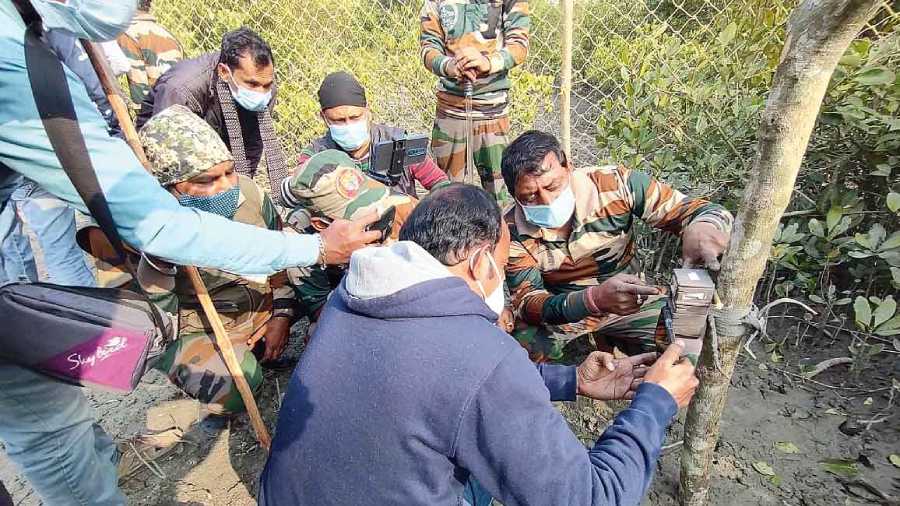The pan-India tiger count moved into the South 24-Parganas forest division of the Sunderbans on Tuesday, with the installation of trap cameras, said forest officials.
“In total, 161 pairs of trap cameras will be placed in the forest in phases,” said Milan Mondal, divisional forest officer of the South 24-Parganas division.
The installation of around 600 pairs of the all-weather night vision cameras had taken place in phases from December 5 in the Sunderbans Tiger Reserve.
“The cameras are kept for a little over a month. Around 130 pairs will be retrieved from the STR and the remaining will be a new set of equipment for the South 24-Parganas division,” said Anurag Danda, director, Sunderbans programme of the WWF.
The organisation is collaborating with the state forest department in the project, providing cameras and training field personnel.
Animal movements activate the sensors in the cameras, which then take photographs.
The Sunderbans is spread across 10,000sq km, a little above 4,000 sqkm of which is in India. The rest is in Bangladesh. The Indian Sunderbans is split between the tiger reserve and the South 24-Parganas division.
The Sunderbans Tiger Reserve, one of the first nine tiger reserves that came into being following the launch of Project Tiger in 1973, is spread across 2,500sq km.
It comprises the Sunderbans National Park (East and West), marked as the core area, and the Sajnekhali Wildlife Sanctuary and the Basirhat Range, which form the buffer zones.
The tiger habitat in the South 24-Parganas division comprises Matla, Raidighi and Ramganga ranges, measuring around 1,100sq km.
The 2020-21 census by the Bengal administration had counted at least 96 tigers in the Indian territory of the Sunderbans, up from 88 in the 2018 pan-India census.
The state conducts a tiger census every year. The national census happens once every four years.
MSTrIPES (Monitoring System for Tigers: Intensive Protection and Ecological Status), a software-based tool, will be used in the Sunderbans tiger count for the first time.
Forest officials estimate a third of the tigers in the mangrove delta live outside the reserve area in the STR.
“According to our estimate, there are around 28 tigers in South 24-Parganas division,” said Mondal.
The human interference in the forests of South 24-Parganas division is more than that in the forests of the STR, said forest officials.
“The pandemic has only increased human interference in the forests,” said a forest official.
